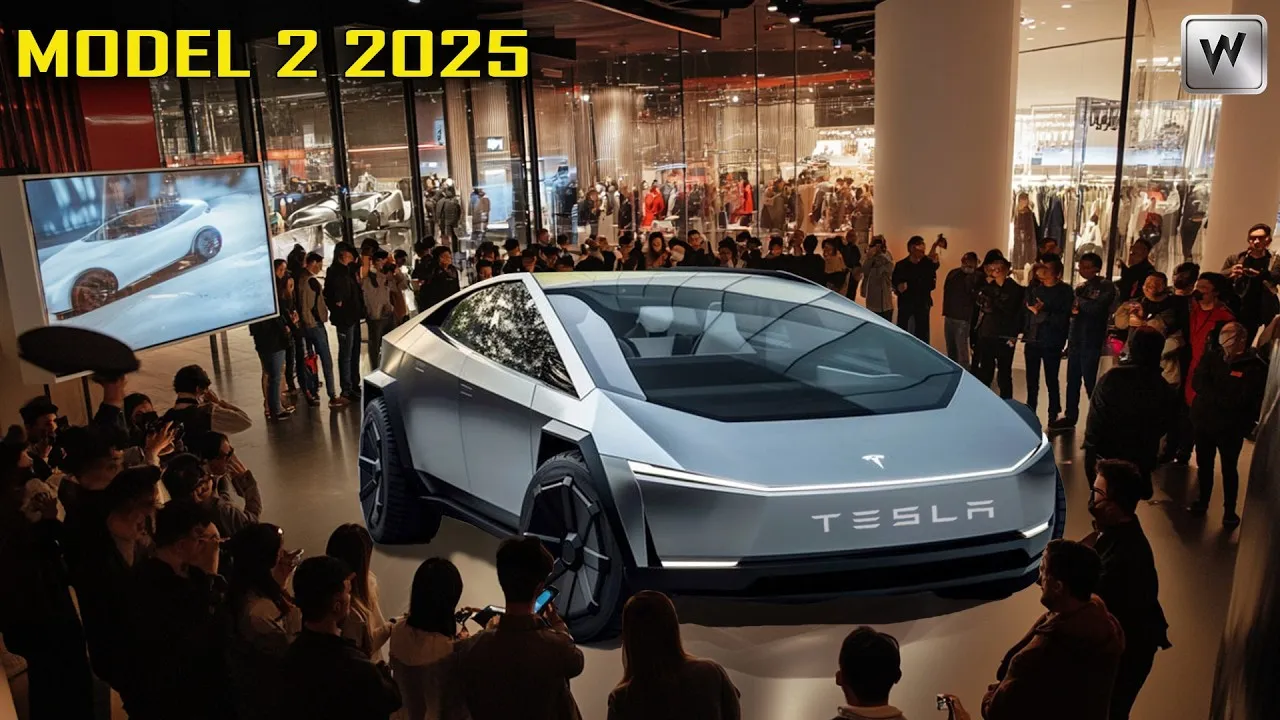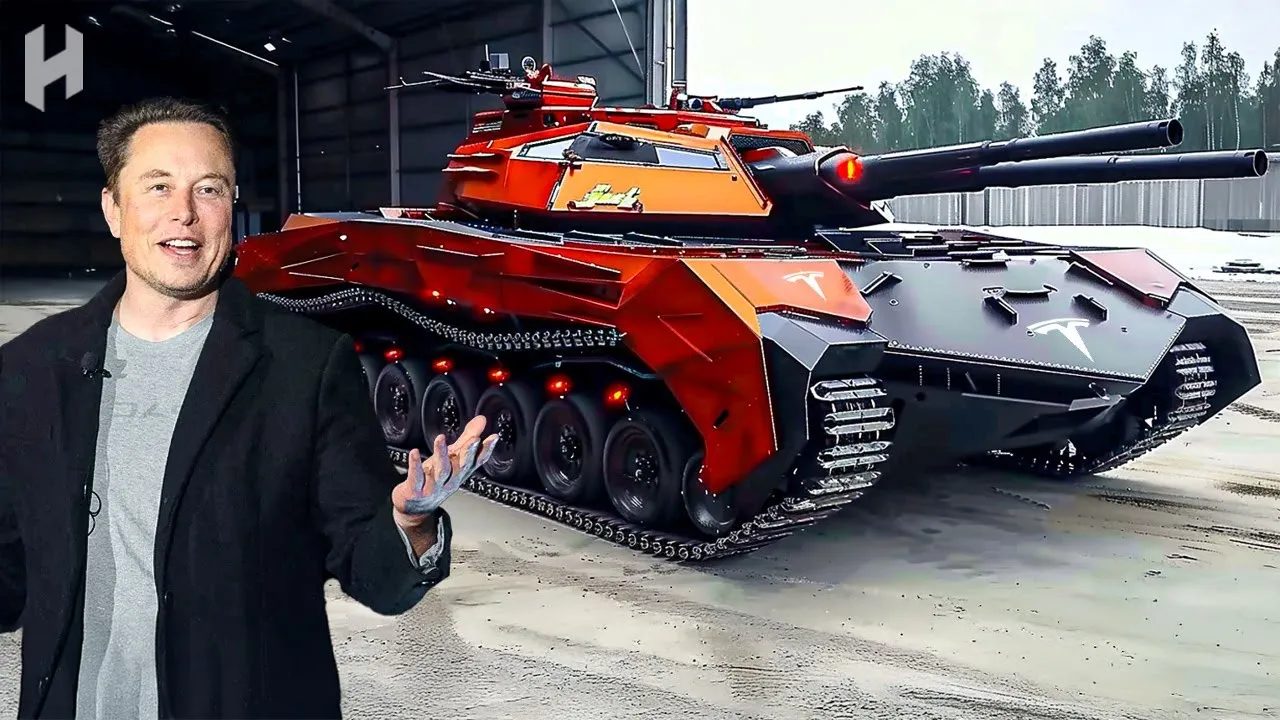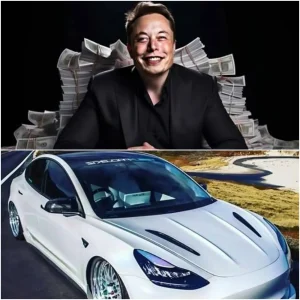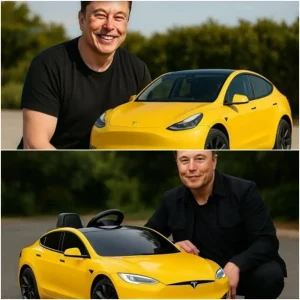Elon Musk has once again sent shockwaves through the world, this time with a jaw-dropping announcement that has left both the automotive and defense industries reeling: the unveiling of a so-called “Tesla Tank,” a futuristic military vehicle that Musk claims will redefine the future of warfare. The billionaire entrepreneur made the revelation during a high-profile event on April 10, 2025, at Tesla’s Gigafactory in Texas, where he also celebrated the official launch of the much-anticipated Tesla Model 2, codenamed “REDWOOD.” But what exactly is happening, and how does a military tank fit into Tesla’s vision of sustainable innovation?

The Tesla Tank, as Musk described it, is not a traditional armored vehicle but a “next-generation autonomous war machine” designed to operate without human intervention. Featuring advanced AI, the tank is equipped with Tesla’s Full Self-Driving (FSD) technology, adapted for combat scenarios, and powered by the company’s cutting-edge 4680 battery cells, which promise extended range and durability in extreme conditions. Musk hinted at its capabilities, stating, “This is the future of war—clean, efficient, and precise. No soldiers on the ground, no fossil fuels, just pure electric power and AI-driven strategy.” The tank’s sleek, angular design, reminiscent of the Cybertruck, is said to incorporate lightweight, ultra-durable exoskeleton materials, making it both agile and resilient.

While details about the Tesla Tank remain scarce, Musk’s announcement has sparked intense speculation. Some analysts suggest that Tesla may be positioning itself to enter the lucrative defense sector, potentially partnering with governments to supply autonomous military vehicles. Others, however, question the ethics of such a move, pointing to the risks of AI in warfare and Musk’s own history of ambitious promises that sometimes fall short. For now, the Tesla Tank remains a prototype, with Musk teasing a possible demonstration later in 2025, leaving the world to wonder how serious this venture truly is.

Amid the buzz surrounding the Tesla Tank, Musk also marked a significant milestone for Tesla’s consumer market: the official launch of the Model 2 “REDWOOD.” First teased in 2020, the Model 2 is Tesla’s most affordable electric vehicle yet, priced at $23,000, and designed to make EVs accessible to the masses. Production began in early 2025 at Tesla’s Texas Gigafactory, with plans to scale up to 10,000 units per week by mid-year. The compact crossover boasts a teardrop-shaped design for optimal aerodynamics, a 300-mile range, and innovative features like Saku Polymer batteries, which are lighter and safer than traditional lithium-ion cells.
The Model 2’s launch comes at a critical time for Tesla, as competition in the EV market intensifies with players like BYD and General Motors rolling out budget-friendly options. Tesla’s use of the Giga Press and a new “unboxed” manufacturing process has slashed production costs by 50%, allowing the company to hit its aggressive price target without compromising quality. “The Model 2 is a game-changer,” Musk declared. “It’s not just a car—it’s a statement that sustainable transport is for everyone.”

However, the juxtaposition of a consumer EV launch with a military tank reveal has raised eyebrows. Some fans on X celebrated Musk’s bold vision, with one user posting, “From affordable EVs to autonomous tanks—Elon is unstoppable!” Others expressed unease, questioning whether Tesla’s focus on military tech could overshadow its mission of sustainability. As Tesla navigates this dual narrative, the world watches closely. Will the Tesla Tank revolutionize warfare, and can the Model 2 cement Tesla’s dominance in the EV market? For now, Musk’s latest moves have left us with more questions than answers, but one thing is clear: 2025 is shaping up to be a pivotal year for Tesla.





